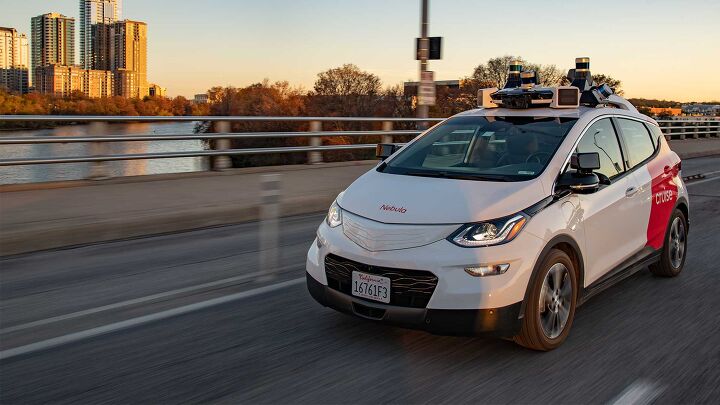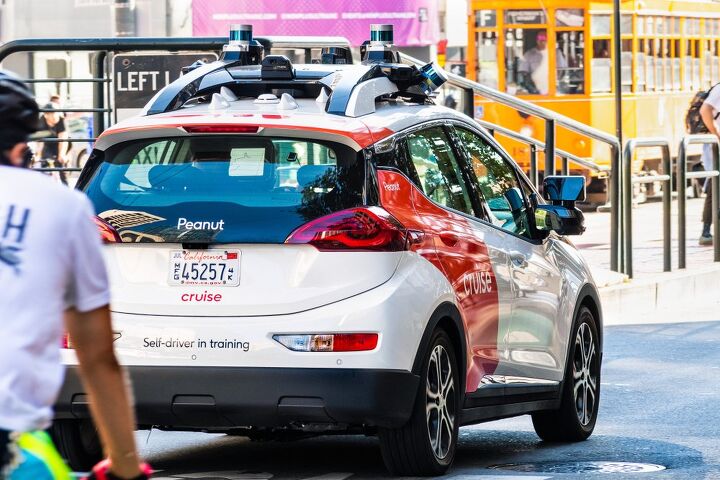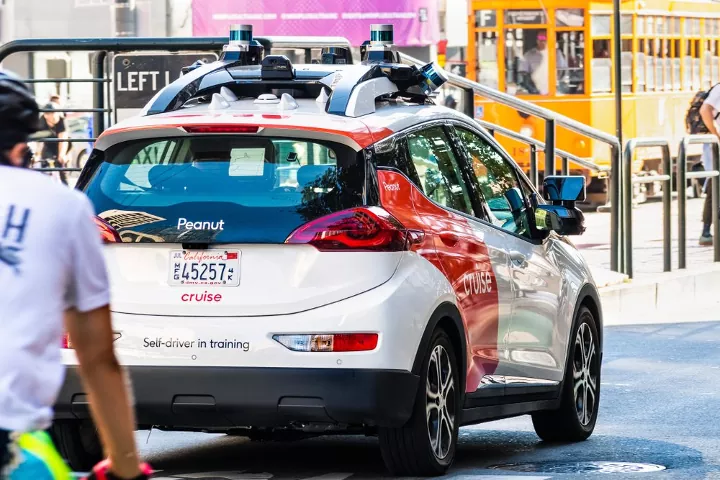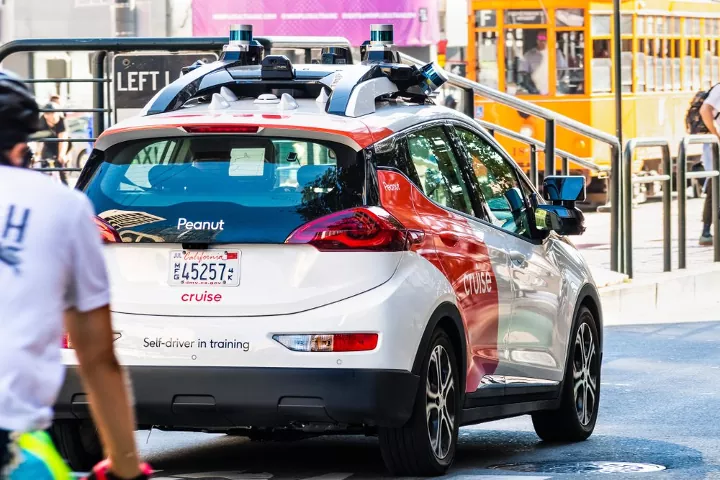#AutonomousVehicles
California DMV Suspends Cruise Driverless Vehicle Permits
The California Department of Motor Vehicles (DMV) has suspended Cruise’s permit to operate driverless vehicles, citing public safety concerns.
This represents a major victory for the Alphabet-owned Waymo, as it’s now the only company within the state that’s legally allowed to offer robotaxi services. On Tuesday, the DMV said that Cruise’s suspension would take effect immediately with the company likewise stating that it would be pausing operations to examine potential improvements in how its vehicles operate.
NHTSA Launches Safety Investigation Into GM's Cruise
General Motors’ Cruise may be one of the first companies in the world to field driverless vehicles as part of a commercial endeavor. But this doesn’t appear to have endeared the brand to everyday people. The business appears to be loathed by San Franciscan residents and emergency response crews, who have only gotten angrier since state regulators allowed the business to expand operations.
Sustained reports of mishaps and injuries involving the vehicles has encouraged the National Highway Traffic Safety Administration (NHTSA) to launch a preliminary investigation into the company — which may also explain why Cruise just issued a press release explaining how it’s going to remedy all of the above.
GM's Cruise Robotaxi Workaround Has First Responders Moving Wayward Autonomous Cars
Companies hoping to press autonomous vehicles into service on public roads have a long way to go to convince governments and local residents that everything will be fine, and the number of high-profile accidents in test cities isn’t helping. General Motors’ Cruise has been testing AVs in San Francisco for a while, but the company’s vehicles have been involved in a number of incidents with first responders, in which they block or delay rescue workers’ ability to help people. The company is looking at ways to improve the situation and recently penned a blog post to explain the path forward.
Pedestrian Trapped Under Cruise Vehicle in San Francisco
On Monday, a pedestrian ended up being trapped beneath an autonomous test vehicle owned by Cruise. The incident took place in San Francisco (Fifth Avenue just south of Market Street) and has already become the subject of some rampant speculation as the company hopes to avoid another public relations nightmare.
Cruise quickly put out a series of statements via Twitter (now X) claiming the pedestrian was actually tossed in front of their robotaxi after being struck by a hit-and-run vehicle that was traveling in the accompanying lane. While the investigation is technically ongoing, numerous media outlets have run with the premise after having seen the on-board footage.
Man Attacking Cruise AV Captured on Video
One of the autonomous test vehicles operated by Cruise in San Francisco has been attacked by a masked assailant wielding a hammer — signaling that the city’s relationship with AVs has only gotten more complicated.
QOTD: Can Robotaxis Ever Work?
Yesterday we covered yet another incident involving Cruise, and we linked back to a few other stories we've written recently about problems that Cruise and Waymo are having in San Francisco.
Cruise Robotaxi Drives Into Wet Cement, More Mishaps With Fire Trucks
The robotaxi situation in California continues to get more ridiculous after additional reports of autonomous test vehicles doing something incredibly stupid. One of the driverless Chevrolet Bolts operated by Cruise apparently drove through a construction zone last week, stranding itself in wet cement. This was followed by news of yet another unsavory encounter involving a Cruise AV and an emergency response vehicle just days later.
Saying the company is fighting an uphill public relations battle would be putting it mildly.
Driverless Hell: Another Cruise Robotaxi Crashes in San Francisco, This Time Into a Fire Truck
There has been a lot of talk about Tesla owners abusing the cars’ semi-autonomous driving features and crashing into emergency vehicles, but there was at least a driver present in those situations. Cruise, General Motors’ autonomous taxi division, can’t seem to keep its vehicles out of trouble, as they keep crashing into things in their home test city of San Francisco. Last night, a taxi crashed into a fire truck, sending one person to the hospital.
San Francisco Traffic Stands Still After Cruise AVs Stall in North Beach
With California having approved the contentious expansion of driverless robotaxis operating in San Francisco, autonomous test vehicles showed their readiness by stalling themselves in the middle of town. The situation reportedly wasn’t the result of local activists trying to disable the vehicles or cyber warfare, but rather the result of their having lost their internet connection for a few minutes.
California Grants Cruise and Waymo Expansion Approval
Self-driving vehicles have become a contentious issue in San Francisco. The city currently serves as a public testing ground for over 500 autonomous cars being fielded by Alphabet’s Waymo and General Motors’ Cruise. But local residents have been losing patience with the vehicles, with numerous reports that they’ve been misbehaving in traffic.
While public complaints seemed to be endangering the companies’ ability to expand operations, the California Public Utilities Commission (CPUC) voted 3-to-1 on Thursday to do just that. This opens the door to allow Waymo to begin charging for autonomous taxi services, something Cruise was already doing there, and accelerate their respective AV programs within California.
Driving Dystopia: Companies Are Getting Serious About Vehicle-to-Infrastructure Connectivity
Before connected vehicles had become ubiquitous, numerous companies suggested that they would be networked into roadway infrastructure to improve safety and decrease traffic congestion. The concept even became a keystone issue for lobbyists trying to convince lawmakers to create regulations favorable to autonomous cars.
But it never manifested due to just how ambitious the overarching concept happened to be. The relevant technologies were still in their infancy and would require years of collaboration between multiple industries and various government agencies before anything got off the ground. However, things are reportedly starting to change. Pilot programs are being implemented on public streets, companies are working on the necessary hardware, and the U.S. government is asking for more with cash in hand.
Hands Free, Eyes On: General Motors University Is In Session
Today, General Motors unveiled the beginnings of a new consumer education campaign surrounding advanced driving systems. Titled “Hands Free, Eyes On,” the movement is an effort to ensure consumers and drivers know exactly what their vehicles are and will someday be capable of.
The eventual goal is, of course, zero crashes, so along with implementing advanced driving technologies such as hands-free driving, GM is educating the public about what all of the various active-safety features, from lane-keeping assistance to adaptive cruise control all the way to hands-off driving. The campaign will live on GM.com, as well as a number of social media channels, and will evolve over time as technologies find their way into dealerships.
Cruise Ad Insults Human Drivers, Gets Criticized
Last week, General Motors published an advertisement for its Cruise autonomous vehicle company in The New York Times. The marketing effort makes the claim that “humans are terrible drivers” and has subsequently been chided by former NHTSA administrator and safety advocate Joan Claybrook.
The ad in question states that human drivers cause millions of accidents each year and asserts that “Cruise driverless cars are designed to save lives.” But Claybrook and the Advocates for Highway and Auto Safety are accusing GM of being overzealous with an untested product in addition to exercising some bad taste with its marketing materials.
U.S. Regulator Proposes Updated Rules for Autonomous Vehicles in Exchange for Data
The National Highway Traffic Safety Administration (NHTSA) proposed a new national program to update the regulations surrounding autonomous vehicles this week. Updated rules would presumably allow automakers to field more self-driving test vehicles on public roads than we’ve seen thus far in exchange for those companies sharing the data those cars collect with the government.
Due to the fact that any autonomous vehicle lacking human controls (e.g. steering wheels and pedals) have to be given exceptions from the Federal Motor Vehicle Safety Standards (FMVSS) to legally operate in populated areas, NHTSA leadership believes that having access to the data they’ve collected will be useful in informing decisions on how the rules could be changed. The claim is that the resulting information will help regulators update safety standards to incorporate self-driving vehicles. But it’s also going to be a privacy issue, as citizens have already expressed their dismay with automakers even considering sharing AV data with local authorities.
SF Residents Disable Autonomous Vehicles With Traffic Cones
San Francisco has become a hub for companies wanting to test autonomous vehicles thanks to its progressive leadership and proximity to Silicon Valley. But local residents have slowly been losing patience with the vehicles themselves as they’ve grown in number. While malfunctioning AVs are never popular with other drivers, allowing them to operate without a human safety driver has resulted in rolling reports of vehicles clogging up traffic.
Self-driving test mules are programmed to exercise the maximum amount of caution whenever they’re uncertain of how to progress. This has resulted in traffic jams that are infuriating the locals. But it has also made them incredibly easy to defeat, with activist groups leveraging their circumspect behavior to disable them by placing a traffic cone on the hood.






























Recent Comments